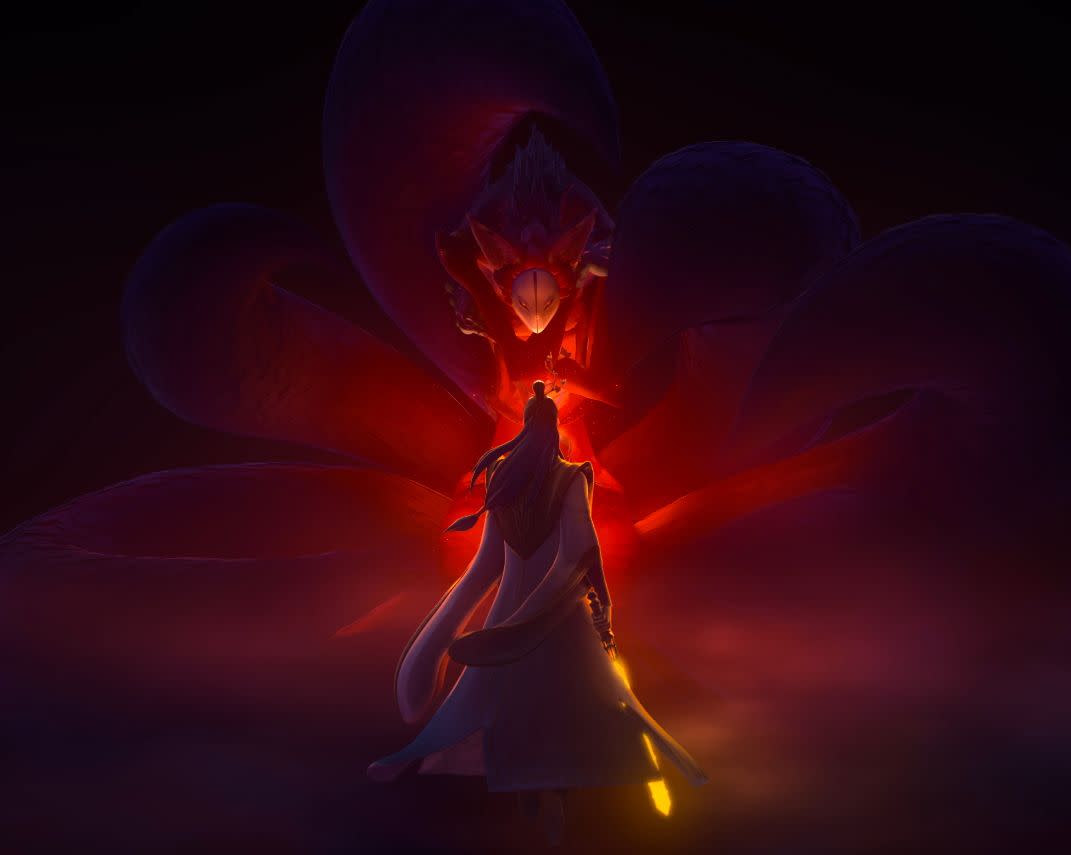Jiang Zi Ya’s directors on the pressure of surpassing themselves than outperforming the success of Ne Zha

‘Jiang Zi Ya: Legend of Deification’ is the latest instalment in Beijing Enlight Pictures’ Fengshen Cinematic Universe. A Chinese animated feature, the movie is based loosely on the popular fantasy novel Feng Shen Bang or The Investiture of the Gods. It follows Jiang Zi Ya’s story towards deification.
Following the success of the studio’s 2019’s release, Ne Zha, Yahoo Lifestyle SEA spoke over the phone to directors, Cheng Teng and Li Wei, about the pressure for their film to perform, the differences in Chinese and Hollywood’s animation, and the adorable scene-stealer Four-Alike.
“Rather than the pressure to perform as well or better than Ne Zha, the pressure is more on surpassing ourselves and what we could produce,” director Cheng Teng shared.
Initially announced to be released in January 2020, ‘Jiang Zi Ya: Legend of Deification’ was delayed to 1 October due to the COVID-19 pandemic. The animation chases after the studio’s 2019 resounding success, Ne Zha, which had topped China’s box-office chart, grossing more than five billion yuan (S$990 million).

The animated feature narrates Jiang Zi Ya’s story, being the head disciple of Kunlun Sect and leading a divine army against King Zhou of the Shang Dynasty. Victorious in his battle for deification, Jiang Zi Ya is about to be made the leader of the Gods when he makes a costly mistake, resulting in his banishment to Beihai.
“There is a little bit of pressure in terms of anticipation from the audience after Ne Zha’s success, and of course we want the animation to perform well, but it did not really affect us. The two animations are different, with Ne Zha being more of a comedy while Jiang Zi Ya’s story is more like a drama,” Li Wei added.
Indeed, ‘Jiang Zi Ya: Legend of Deification’ took nearly four years, from pre-production to post-production, before it was completed in December 2019. The directors shared that they did not venture into producing the movie when they knew about Ne Zha’s success, but instead, decided on making Jiang Zi Ya while Ne Zha was also in production.
With both of the directors having spent time in America and having worked on various animation projects before returning to China to work on this film, Cheng Teng and Li Wei could see the differences in producing animated features in these two countries.
“Having worked in Hollywood before, in terms of technical skills, I’d have to say that they are perfect. There are no flaws, and they have a solid foundation. For us, however, we are still improving, and we are also more concern about storytelling. Chinese movies are very different from Hollywood’s, and we don’t want to surpass them. We also want to tell a better story that is more in tune with our audience,” Cheng Teng explained.

This might be a reason why the studio is focused on building their own cinematic universe with the use of Chinese mythology characters.
“Selling in China and in the US is very different,” Li Wei added. “In this time and day, the Chinese audience can watch Hollywood movies easily, but they can also pick to watch Chinese films. There are different needs, cultures, and markets to take into account when we are making a film.”
Another advantage that the Chinese have over Hollywood is the availability of smaller studios. “While Hollywood seems to be dominated by Pixar and Dreamworks in the animated field, China’s animated features are not solely produced by big companies. This gives us the flexibility to collaborate with small, medium studios, bringing in freshness,” Li Wei added.
It is also hard to ignore the adorable Four-Alike, modelled to look like a flying puppy more than the majestic deer-like creature that mythology usually portrays it to be. A total scene-stealer, we are curious about why the directors took this approach, to which Li Wei credited the need for contrast.
“Jiang Zi Ya is portrayed as a handsome yet silent man, someone who bottles his emotions. If we do not have something to contrast his personality, it will make the show boring and lacking. With Jiang Zi Ya interacting with Four-Alike, it shows his humanity, and makes it easy for the audience to empathise and connect with him,” Li Wei shared.
With the gradual opening of cinemas in China, the new release date, set nearly nine months after its original date, coincides with China’s National day and the country’s “Golden Week” holidays.
“We decided early what we wanted from this feature, paying a lot of attention on the use of colours and lighting, details of the backgrounds, and the different expressions on our characters’ faces. Even though we are both educated in the US, we put a lot into thinking about how we can best showcase the Chinese way of beauty to the audience.”


